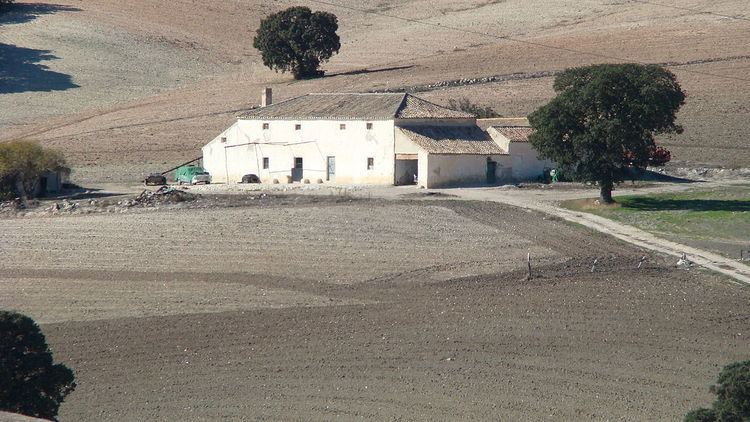 | ||
A cortijo is a type of traditional rural habitat in the Southern half of Spain, including all of Andalusia and parts of Extremadura and Castile-La Mancha.
Contents
Cortijos may have their origins in ancient Roman villas, for the word is derived from the Latin cohorticulum, a diminutive of cohors, meaning 'courtyard'. They are often isolated structures associated with a large family farming or livestock operation in the vast and empty adjoining lands.
Description
A cortijo would usually include a large house, together with accessory buildings such as workers' quarters, sheds to house livestock, granaries, oil mills, barns and often a wall enclosing a courtyard. It was also common for isolated cortijos to include a small chapel.
In mountain areas, rough stone was often used for wall construction and ashlar for corners, doorways, windows and arches. In ancient cortijos, mud or slaked lime were used as mortar. However, the traditional materials were replaced by cement and brick construction in more recent ones. In places where stone was hard to come by, adobe was more common as a construction material. Usually cortijos were whitewashed. Roofs were built with wooden beam structures and covered with red ceramic roof tiles.
The master of the cortijo or "señorito" would usually live with his family in a two story building when visiting, while the accessory structures were for the labourers and their families —also known as "cortijeros". The latter buildings were usually of more simple construction.
The cortijo as a habitat is surrounded by cultivated lands, such as olive trees or other kind of agricultural exploitation. In certain desolate areas of the southern Central Meseta, Extremadura and Sierra Morena, a cortijo would be the only inhabited center for many miles around. Thus, most of them were self-sufficient units, as far as that was possible.
Many cortijos became deserted following General Franco's Plan de Estabilización and the abandonment of traditional agricultural practices by the local youth, including the lifestyle changes that swept over rural Spain during the second half of the 20th century.
